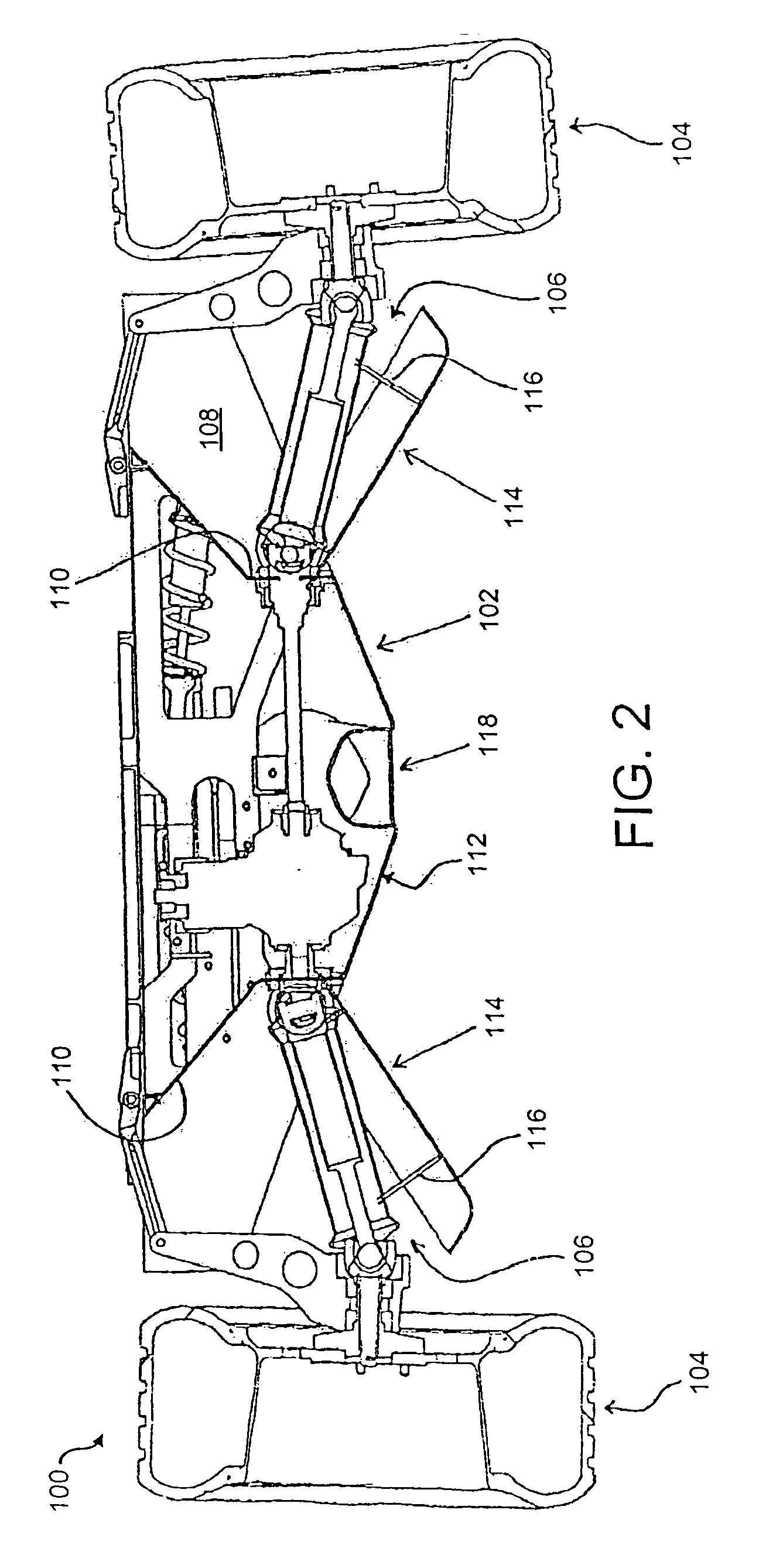Wheel suspension and retraction system
a technology of suspension and retraction system, which is applied in the direction of resilient suspension, propulsive elements, vessel construction, etc., can solve the problems of amphibious vehicle power train complexity, difficulty in power design, and particular acute problems
- Summary
- Abstract
- Description
- Claims
- Application Information
AI Technical Summary
Benefits of technology
Problems solved by technology
Method used
Image
Examples
Embodiment Construction
[0062] Referring to FIG. 1, an amphibious vehicle, in accordance with a preferred embodiment of the invention, is indicated generally at 2. The amphibious vehicle 2 is of the “sit astride” type, of the kind similar to a motorcycle, jet-ski, quad bike or the like.
[0063] The amphibious vehicle 2 has a main body 14 and a hull 16, which are formed separately and joined at a split line indicated at 18. A driver's seat 22 is provided on the main body 14, along with a passenger seat 24 astern of the driver's seat 22. Although only a single passenger seat 24 is illustrated, more than one passenger seat may be provided. The axis of the seating is arranged on the longitudinal axis of the vehicle, or parallel thereto. Handlebars 26 are provided in front of the driver's seat 22, with a windscreen 28 mounted in front of the handle bar 26.
[0064] The lower surface of the hull 16 has a planing surface 20, for marine travel. Mounted in the hull 16, the amphibious vehicle 2 has a prime mover 4, typ...
PUM
 Login to View More
Login to View More Abstract
Description
Claims
Application Information
 Login to View More
Login to View More - R&D
- Intellectual Property
- Life Sciences
- Materials
- Tech Scout
- Unparalleled Data Quality
- Higher Quality Content
- 60% Fewer Hallucinations
Browse by: Latest US Patents, China's latest patents, Technical Efficacy Thesaurus, Application Domain, Technology Topic, Popular Technical Reports.
© 2025 PatSnap. All rights reserved.Legal|Privacy policy|Modern Slavery Act Transparency Statement|Sitemap|About US| Contact US: help@patsnap.com



